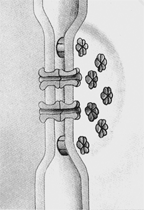Ben, a 17 year-old wrestler, developed a lesion on his upper back. The lesion was relatively round and consisted of a pink scaly rough center and raised edge. While it wasn't painful, the itching was bothersome to the young man. HIs coach advised him to see his doctor about the lesion. Upon visiting his physician, a scraping of the affected area was collected and placed in a drop of KOH, then examined under the microscope, revealing slender fungal hyphae. A culture was inoculated, which grew a spreading flat fuzzy colony after 10 days of incubation at 30oC. Microscopic examination of the culture demonstrated the presence of both macroconidia and microconidia. What is the most likely diagnosis?
A. Cutaneous blastomycosis
B. Dermatophytosis
C. Sporotrichosis
D. Candidiasis
E. Tinea versicolor
Answer: B
You might also like to view...
Which experimental modification would most effectively help to determine the sequence of reactions and reaction intermediates in the Calvin cycle?
A. Exposing the cells to 14CO2 for various time intervals B. Exposing the cells to alternating periods of light and darkness C. Exposing the cells to radiolabeled O2 instead of 14CO2 D. Varying the amount of water the cells are exposed to Clarify Question What is the key concept addressed by the question? What type of thinking is required? Gather Content How would you begin to narrow down the experimental options? What key molecules could you focus on considering the investigation is about the Calvin cycle? Choose Answer Do you have all the information needed to determine which experimental approach would be most effective? Reflect on Process Did your problem-solving process lead you to the correct answer? If not, where did the process break down or lead you astray? How can you revise your approach to produce a more desirable result?
Within eukaryotic genes are sections of information called ________ that will be removed from the RNA strand prior to it leaving the nucleus
a. introns and exons b. introns c. promoter sequences d. exons e. RNA polymerases
The zygote goes through ____ to become a(n) ____
a. cleavage; blastula b. cleavage; gastrula c. zygote formation; embryo d. cleavage; egg e. fertilization; blastula
The structures in this figure:a
provide anchorage points between adjacent cells.
b. allow the transport of small molecules and ions between adjacent cells.
c. allow passage of materials through intercellular spaces.
d. prevent the passage of materials through intercellular spaces.
e. can only be found in plants.c